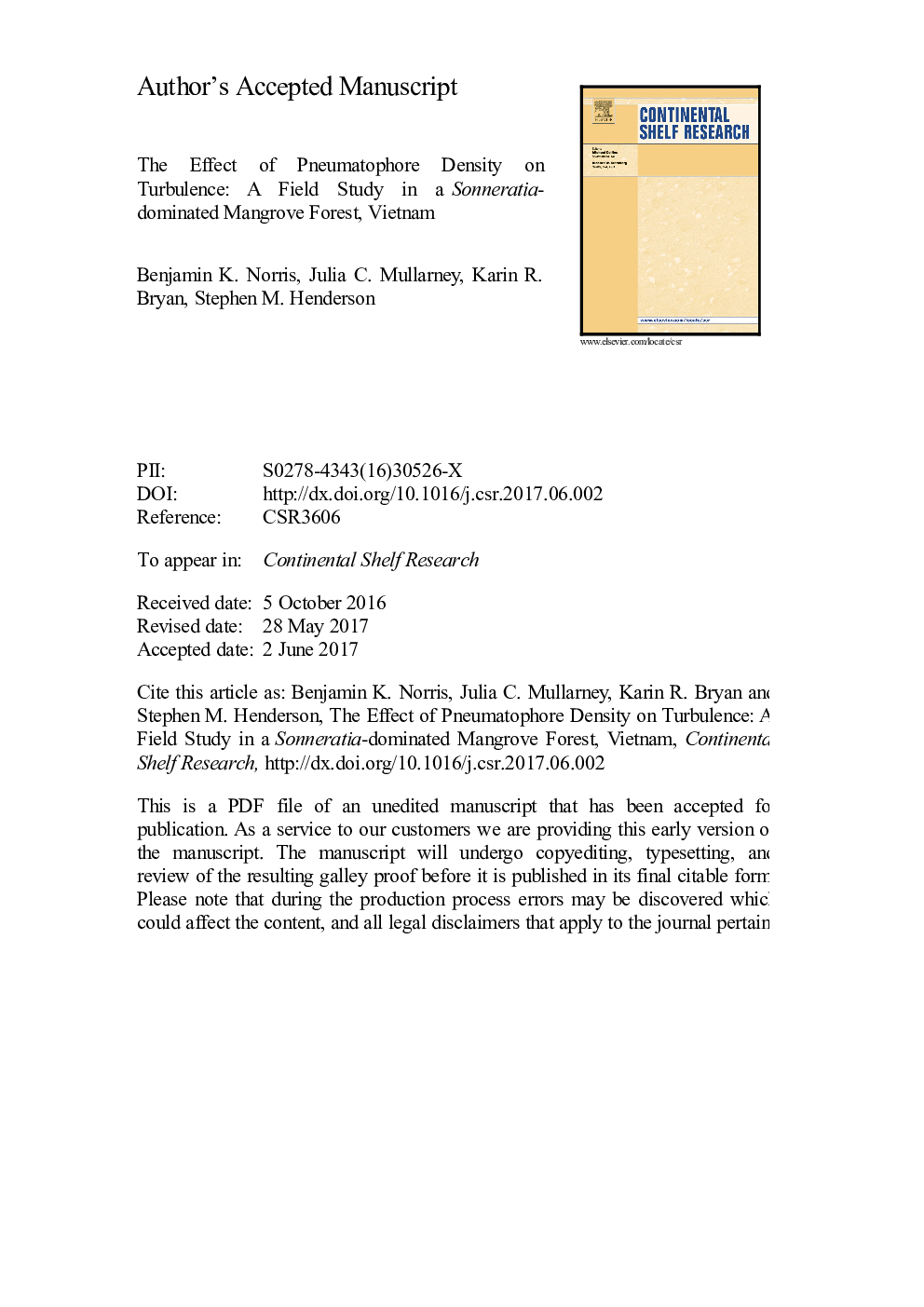| Article ID | Journal | Published Year | Pages | File Type |
|---|---|---|---|---|
| 5764369 | Continental Shelf Research | 2017 | 36 Pages |
Abstract
This paper examines the role of mangrove pneumatophore roots as a spatial control over the turbulent kinetic energy (TKE) dissipation rate within a natural mangrove forest. Measurements of turbulence at millimeter scales were compared with vegetation geometries reconstructed using a novel photogrammetric technique. These small-scale relationships were then averaged to show larger-scale patterns in turbulence across the mudflat and mangrove fringe-forest transition. Although turbulence estimates varied with across-shore position, TKE dissipation was always elevated in the fringe relative to mudflat and forest interior sample sites. The largest dissipation rates (4.5 Ã 10â3Â WÂ kgâ1) were measured as breaking waves propagated over canopies in very shallow water. Dissipation was reduced, but often remained intense (10â5-10â4Â WÂ kgâ1) under non-breaking waves at the fringe, likely indicating turbulent generation in pneumatophore wakes. Pneumatophore density was positively correlated with the spatial distribution of TKE dissipation. Turbulence was also correlated positively with wave height and negatively with water depth. Fringe sediments were more sandy and less muddy than sediments onshore and offshore, suggesting that the intense turbulence may lead to winnowing of fine-grained sediments at the fringe.
Related Topics
Physical Sciences and Engineering
Earth and Planetary Sciences
Geology
Authors
Benjamin K. Norris, Julia C. Mullarney, Karin R. Bryan, Stephen M. Henderson,
